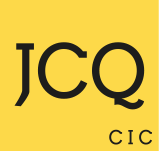Phase 1: A2C Transport
The first phase has now been completed. This phase focused on updating the way in which data was transmitted between JCQ Awarding Organisations and Centres. EDI relied on the use of carriers (VANS) providing a central hub through which all operational data could be transferred and then split up. Awarding Organisations and Centres had to pay for this service; however the introduction of the JCQ Migration Application, which was made available to centres from September 2012, meant that use of carriers was no longer necessary.
From 1st September 2012, if your centre used an MIS and was reliant on a VAN carrier, then you would have downloaded the migration application to continue processing orders and outcomes data. The JCQ Migration Application is now supported by Awarding Organisations; more information on support arrangements can be found here.
The JCQ Migration Application is a temporary transport solution which will be replaced during phase two. We have deployed this application early in the programme in order to achieve cost savings for our customers at the earliest opportunity.
For a list of frequently asked questions (FAQs) about the migration application, please click here.
Phase 2A: A2C Integrated Transport
MIS suppliers will embed the migration application functionality within their systems, so that by the time rollout of phase two is complete, this application will no longer be needed and we will be able to withdraw it. This will streamline data transfer between JCQ Awarding Organisations and Centres, particularly for centres with multiple centre numbers and for centres using hosted MIS.
Phase 2B: A2C Message Structures
During phase 2 we are working with MIS Suppliers and our awarding organisations to produce efficient processes and business rules to underpin the new data messaging structures. These new processes and business rules will be also be embedded in the new systems and the same structure will be used by all JCQ Awarding Organisations to service their qualifications. This will help centres communicate with awarding organisations in a more consistent and predictable way. For example, an order for OCR GCSE English will use the same A2C message structure as City and Guilds Hairdressing NVQ.
The programme is producing a technical specification for the data structures, messaging and business processes. The standards that we are developing are open source which means that everyone can use them and non JCQ Awarding Organisations can adopt them at a time that suits them. More information about the A2C specification can be found here.
Phase 2B: A2C Business Processes
We are currently focusing on developing best practice businesses processes to ensure a consistent approach for centres working with our awarding organisations. The new MIS and awarding organisation systems will focus on the following:
- Product Catalogues (replacing basedata, but updated automatically and significantly enriched to include for example dates and fee information)
- Registration – centres will be able to notify an awarding organisation that learners are on a course
- Entries – centres will be able to submit entries for qualifications or request a specific assessment opportunity
- Centre Assessed Outcomes – centres will be able to send marks to awarding organisations
- Awards – centres will be able to claim awards for their learners
- Outcomes – awarding organisations will be able to issue results to centres. Results will be significantly enriched, will include grade boundary information, and amendments will be sent automatically
- Attendance – centres will be able to submit non attendance electronically


